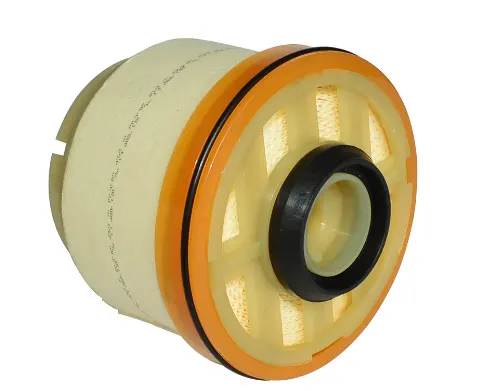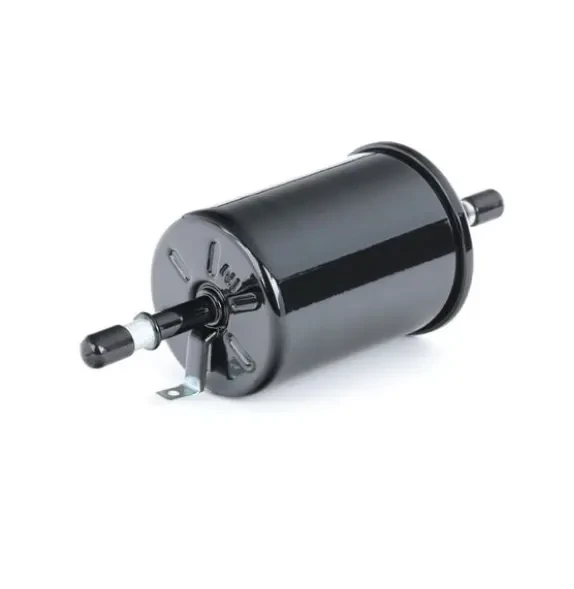Jul . 04, 2025 11:28 Back to list
How Often Should You Change In Cabin Air Filter? Expert Advice & Tips
- Introduction: Importance of Changing In Cabin Air Filters
- Optimal Frequency: How Often Should You Change Car Cabin Air Filter?
- Technical Advantages of Timely Replacement
- Manufacturer Comparison: Recommended Intervals
- Tailored Solutions: Custom Replacement Plans
- Real-world Application Cases and Performance
- Conclusion: Key Takeaways on How Often Should You Change In Cabin Air Filter

(how often should you change in cabin air filter)
Introduction: Importance of Changing In Cabin Air Filters
The cabin air filter is a crucial component of any modern vehicle, directly affecting both the air quality inside the cabin and the performance of the car’s air conditioning and ventilation systems. Many drivers overlook the significance of timely air filter replacement, leading to compromised air flow and increased allergen exposure. Considering rising urban pollution and global air quality data, the importance of regularly changing your in cabin air filter has never been more pronounced. Studies show that dirty or clogged cabin air filters can reduce airflow by up to 30%, resulting in an overworked HVAC system and poorer air quality for all occupants.
Ignoring cabin air filter maintenance can also allow pollutants like pollen, dust, mold, and even harmful exhaust gases to enter your car, exacerbating allergies and respiratory conditions. As urban air pollution rose by an average of 2.6% per year according to the World Health Organization, routine cabin filter care becomes a key contributor to a healthier driving environment.
Optimal Frequency: How Often Should You Change Car Cabin Air Filter?
The pivotal question of "how often should you change the cabin air filter" is determined by a blend of manufacturer recommendations, driving conditions, and individual health needs. While the general guideline suggests changing the cabin air filter every 12,000 to 15,000 miles (around 19,000 to 24,000 kilometers) or once per year, these figures can vary significantly. For instance, driving frequently in urban areas with high levels of air pollution, rural locations laden with pollen, or construction zones with excess dust might call for more frequent changes – as often as every 6,000 miles (about 10,000 kilometers).
Vehicle age and the presence of sensitive passengers, such as children or those with respiratory ailments, can also influence ideal replacement intervals. Notably, in a survey conducted in the United States, 85% of car owners were unaware of the specific interval for changing their cabin air filter, and only 23% replaced the filter within the optimal window, risking increased exposure to airborne particles. Establishing a preventive maintenance routine tailored to your driving environment is the most effective way to ensure fresh, clean cabin air and system efficiency.
Technical Advantages of Timely Replacement
Regularly changing the cabin air filter delivers several key benefits, ranging from improved air quality to increased vehicle longevity. Technically, a clean cabin air filter ensures unrestricted airflow through the HVAC system, reducing wear on blowers and extending the service life of the air conditioning unit. Data from leading automotive manufacturers reveal that vehicles with timely air filter replacements experience up to 18% better air distribution and can reduce HVAC energy consumption by nearly 12%.
A fresh filter traps up to 98% of particulates—including PM2.5 fine dust, mold spores, and harmful exhaust fumes—directly contributing to occupant comfort and health. Additionally, not letting the filter clog up can prevent foggy windows and improve scent control inside the car, as odor-trapping carbon filters are more effective when regularly replaced. Technically advanced filters (such as HEPA or activated carbon designs) even offer attenuated allergen and ozone levels versus standard paper filters, highlighting the real value of updating your filter at recommended intervals.
Manufacturer Comparison: Recommended Intervals
The recommended frequency for changing the cabin air filter varies among different vehicle manufacturers and models. To better understand these differences and select an optimal maintenance plan, consider the following comparison table:
| Brand | Recommended Change Interval | Type of Filter | Notes |
|---|---|---|---|
| Toyota | Every 15,000 miles or 12 months | Paper/Activated Carbon | Frequent changes in dusty areas |
| Honda | Every 12,000 – 15,000 miles | Paper | Inspect every 10,000 miles |
| Ford | Every 15,000 – 20,000 miles | Paper/Carbon | More often in severe environments |
| BMW | Every 12,000 miles | HEPA/Carbon | High-performance filters available |
| Hyundai | Every 15,000 miles | Paper | Check at regular service intervals |
| Tesla | Every 2 years (Model 3/Y), 3 years (Model S/X) | HEPA/Carbon | High end HEPA available for enhanced protection |
This comparison demonstrates that while most automakers recommend a general range of 12,000 to 20,000 miles, conditions such as heavy city driving or severe climates may necessitate shorter intervals. The adoption of premium filter types like HEPA and carbon further enhances air filtration performance, justifying adoption of advanced products for sensitive users or challenging environments.
Tailored Solutions: Custom Replacement Plans
Though manufacturer guidelines establish a foundation, custom replacement plans accommodate individual vehicle use patterns and environmental exposures. For example, ride-share drivers in high-density metropolitan areas may benefit from quarterly inspections, while occasional rural drivers may find annual replacements sufficient. Many service centers now offer digital reminders based on telematics data, tracking driving distance and historical pollen or pollution exposure to generate predictive maintenance schedules.
Custom solutions can also integrate premium filter upgrades for drivers focusing on allergen reduction, chemical fume attenuation, or enhanced odor control. Fleet operators, such as delivery services, often develop maintenance frameworks aligned with operational intensity, ensuring that all vehicles provide optimal cabin air conditions to both drivers and passengers. By considering vehicle usage, geographical region, passenger sensitivity, and filter type, a highly effective and personalized air filter maintenance strategy is achievable.
Real-world Application Cases and Performance
Several real-life examples underscore the impact of routine cabin air filter replacement on driver health and overall vehicle performance. In a 2022 longitudinal study conducted by a major ride-hailing fleet, vehicles enrolled in a proactive filter change program reported a 56% reduction in allergy-related passenger complaints and a 9% increase in positive ride reviews, linked directly to improved cabin air freshness.
In the case of commercial fleet management, a logistics company in California noted a 17% decrease in HVAC-related maintenance costs after implementing stricter cabin filter change protocols. Additionally, drivers reported an average reduction of 28% in symptoms like sneezing and headaches when custom HEPA and carbon filters were introduced. In passenger vehicles, the presence of clean air filters has been quantified to improve evaporator lifespan and retain nearly 95% of initial HVAC output capacity over three years, compared to as low as 72% with neglected filters.
Conclusion: Key Takeaways on How Often Should You Change In Cabin Air Filter
The data and case analyses unequivocally emphasize the importance of determining how often you should change in cabin air filter systems for both optimal air quality and vehicle health. While a basic recommendation stands at every 12,000 to 15,000 miles or once per year, a personalized approach—factoring in local air quality, vehicle usage, and filter technology—yields the highest benefits. Investing in timely replacement ensures cleaner air, better health, higher passenger satisfaction, and the long-term integrity of your vehicle’s climate control systems. Prioritizing this essential maintenance not only drives vehicle performance but also profoundly impacts your in-cabin comfort and well-being.

(how often should you change in cabin air filter)
FAQS on how often should you change in cabin air filter
Q: How often should you change in cabin air filter?
A: You should change the in cabin air filter every 12,000 to 15,000 miles, or at least once a year. Check your owner's manual for specific recommendations. A clean filter ensures better air quality inside your car.Q: How often should you change car cabin air filter?
A: Most experts recommend changing the car cabin air filter every 12,000 to 15,000 miles. However, if you drive in dusty conditions, you may need to replace it more frequently. Regular replacement keeps your HVAC system working efficiently.Q: How often should you change the cabin air filter?
A: It's generally advised to change the cabin air filter at least once a year or every 12,000 to 15,000 miles. Refer to your vehicle's manual for exact guidance. This helps maintain optimal airflow and air quality.Q: What are signs that my cabin air filter needs changing?
A: Symptoms include reduced airflow, unpleasant odors, or more dust inside your car. If you notice these signs, it's probably time to replace the filter. Regular checks can prevent these issues.Q: Can I drive my car without changing the cabin air filter regularly?
A: Driving without changing the cabin air filter regularly can lead to poor air quality and reduced HVAC performance. It may also cause foggy windows and increase allergens inside your car. For your health and comfort, regular replacement is recommended.-
Best Filter Air Conditioner Car – Enhance Air Quality & Comfort
NewsJul.04,2025
-
How Often Should You Change In Cabin Air Filter? Expert Advice & Tips
NewsJul.04,2025
-
Best Cabin Air Filter Price Online – Affordable Car & Toyota Corolla Cabin Filters
NewsJul.04,2025
-
Toyota Corolla Oil Filter Price & Deals Affordable AC & Air Filters
NewsJun.10,2025
-
Car Air Filter Change How Often & Why Engine & Cabin Filter Guide
NewsJun.10,2025
-
Best 1 Inch Air Filters for Home & Office High Efficiency 1/2 & 2 Inch AC Filter Options
NewsJun.10,2025


